1935年生于辉县。毕业于开封师范学院中文系。曾任辉县文化馆馆长,副研究员。
1968 年从事摄影工作,
1980年加入河南省摄影家协会 其作品主要全面完整记录上世纪六七十年代辉县全民性拓荒造田、开山筑路、兴修水利、 战天斗地艰苦卓绝改造自然以及当时政治挂帅、五小工业和群众生产生活等场景。 先后 有数百幅作品在全国、省内外报刊发表并且参加全国农业、水利、交通、林业、民族以及 出国展览
展览
2005 年 河南摄影家协会、河南省博物院举办的“河南摄影50周年作品收藏展”4 幅作品被展出和收藏。
2008 年 由法国文化部在巴黎夏佑宫举办“建筑与遗产之城”国际摄影展展出4幅作品
出版
2015 年 中国摄影出版社出版发行《愚公移山—— 一个时代的宏大愿景》
2003 年 中国摄影出版社出版周振华摄影作品集《70年代战天斗地》
Zhou Zhenhua
Born in 1935 in Hui country. Graduated from Chinese Department of Kaifeng Normal University. Served as the director and associate researcher of Hui County Cultural Center. In 1968, he was engaged in photography. In 1980, he joined The Photographers' Association of Henan province.
His works mainly record various social movements during the last century 60s in Hui County, including land management, mountain road construction, water conservancy, and nature reconstruction that associate with the political of reform and opening-up, as well as five major industries, mass production, and living scenes, etc. Zhou Zhenhua joined more than hundreds of photographic works of national and international exhibitions, and published works at newspapers nationwide.
Exhibitions
2005 “50th Anniversary Of Henan’s Photography Work Collection”, Henan Photographers' Association
2008 “The Architecture And Heritage City”International Photography Exhibition, French Ministry of Culture
Publications
2015 The Old Foolish Man Whom Removed Mountains: the Grand Vision of An Age, China Photography Publishing House
2003 Zhou Zhenhua’s Photography: The persevering spirit in 1970’s, China Photography Publishing House
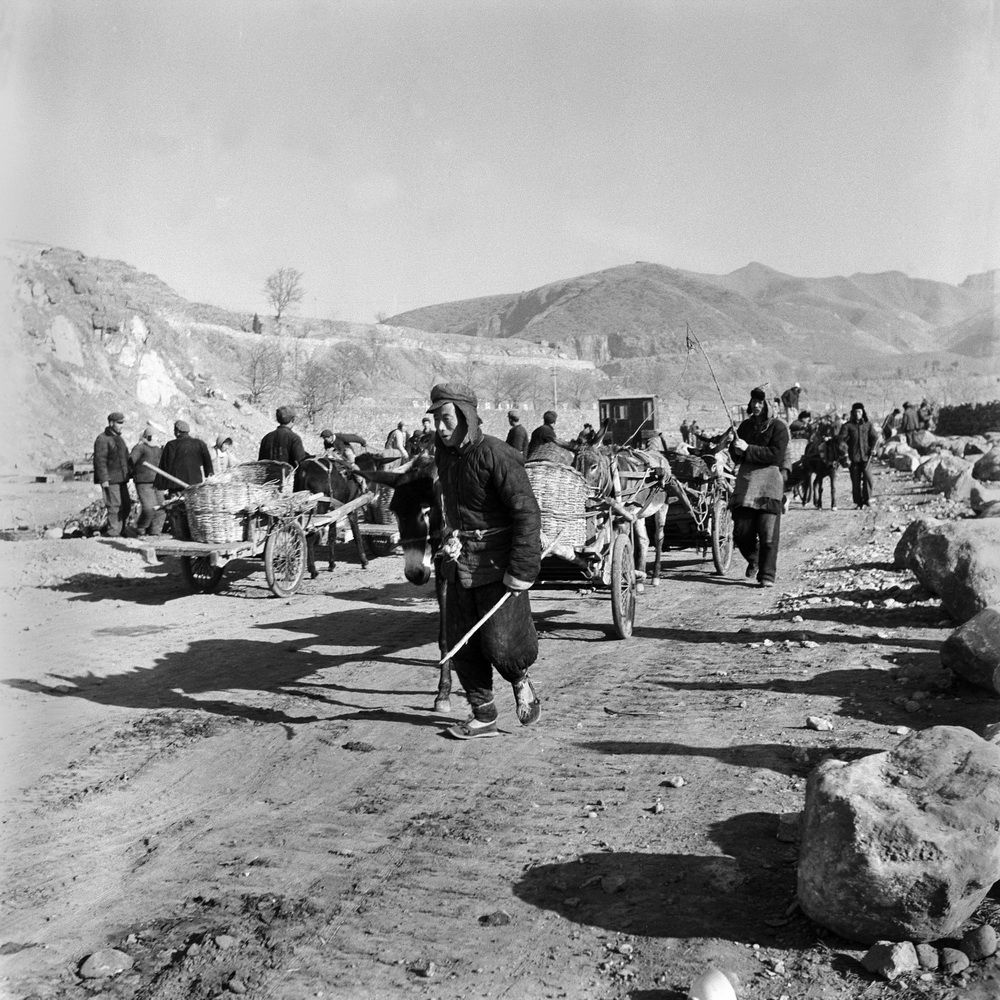
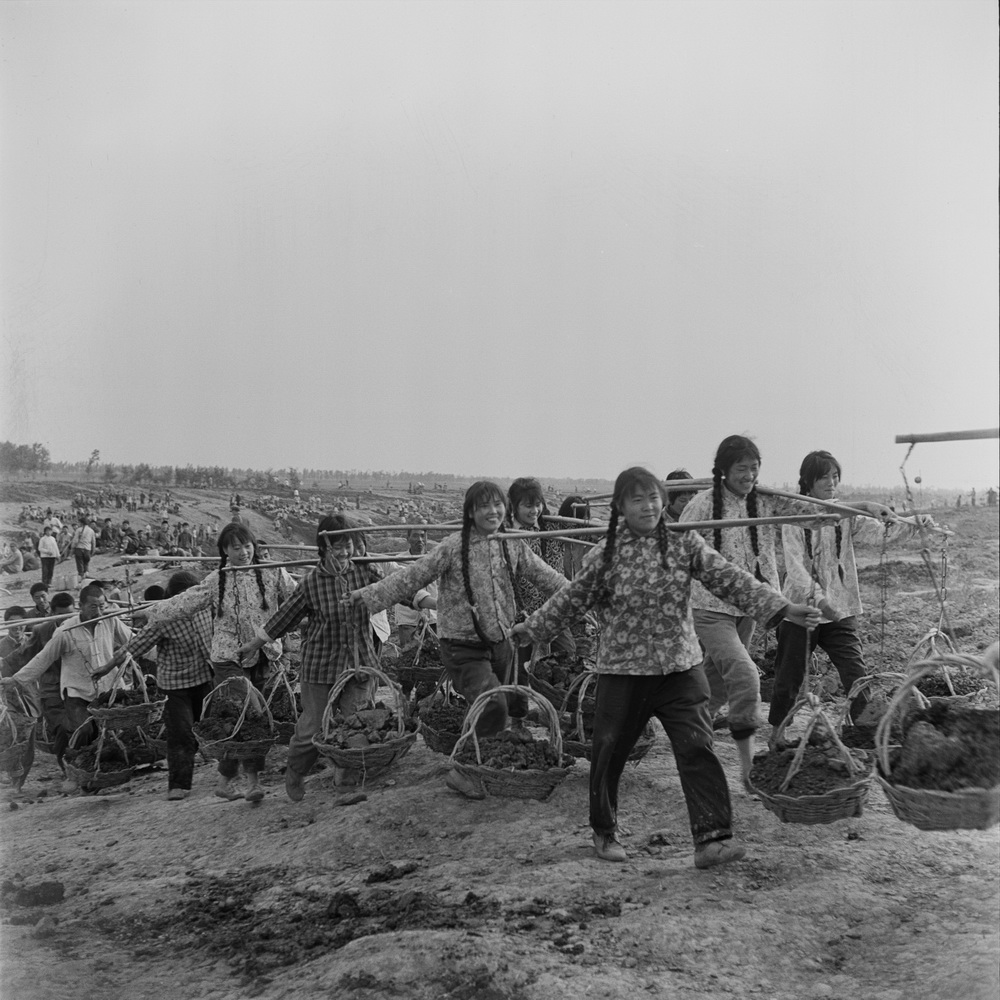
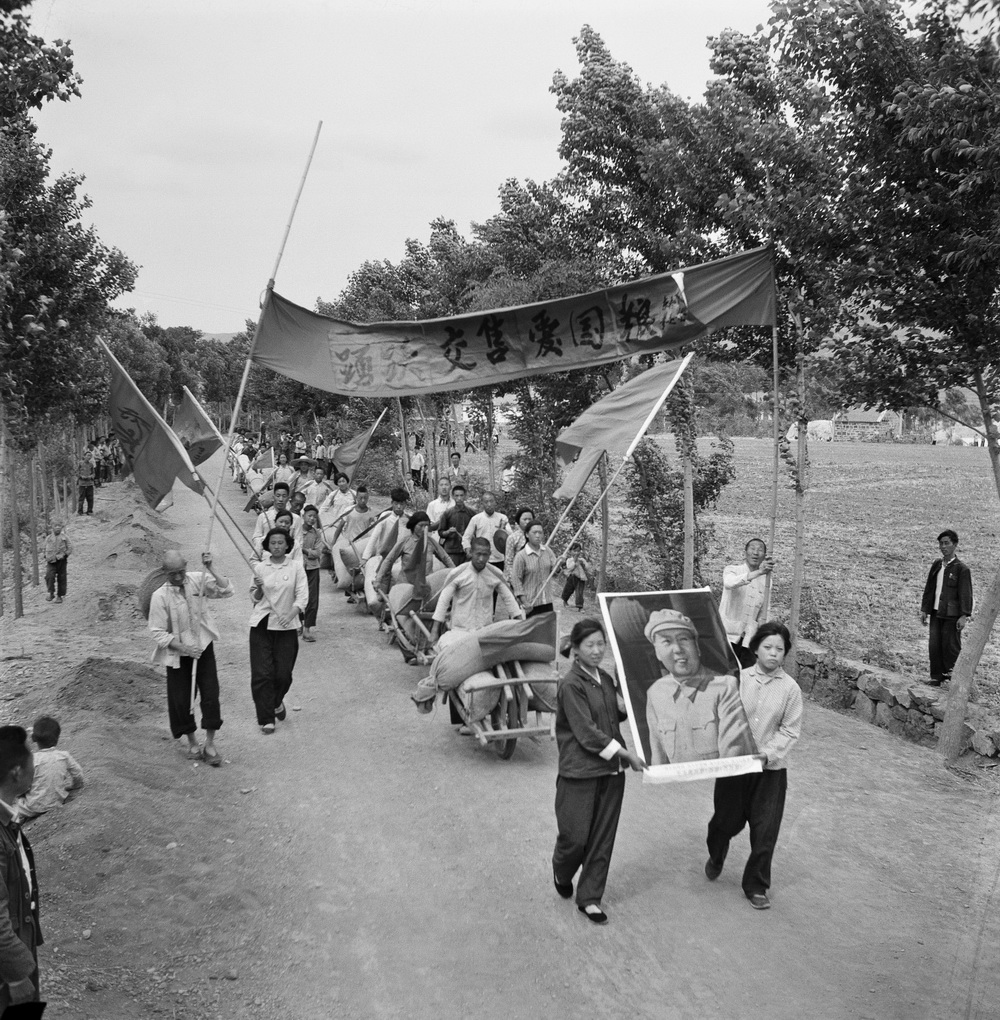

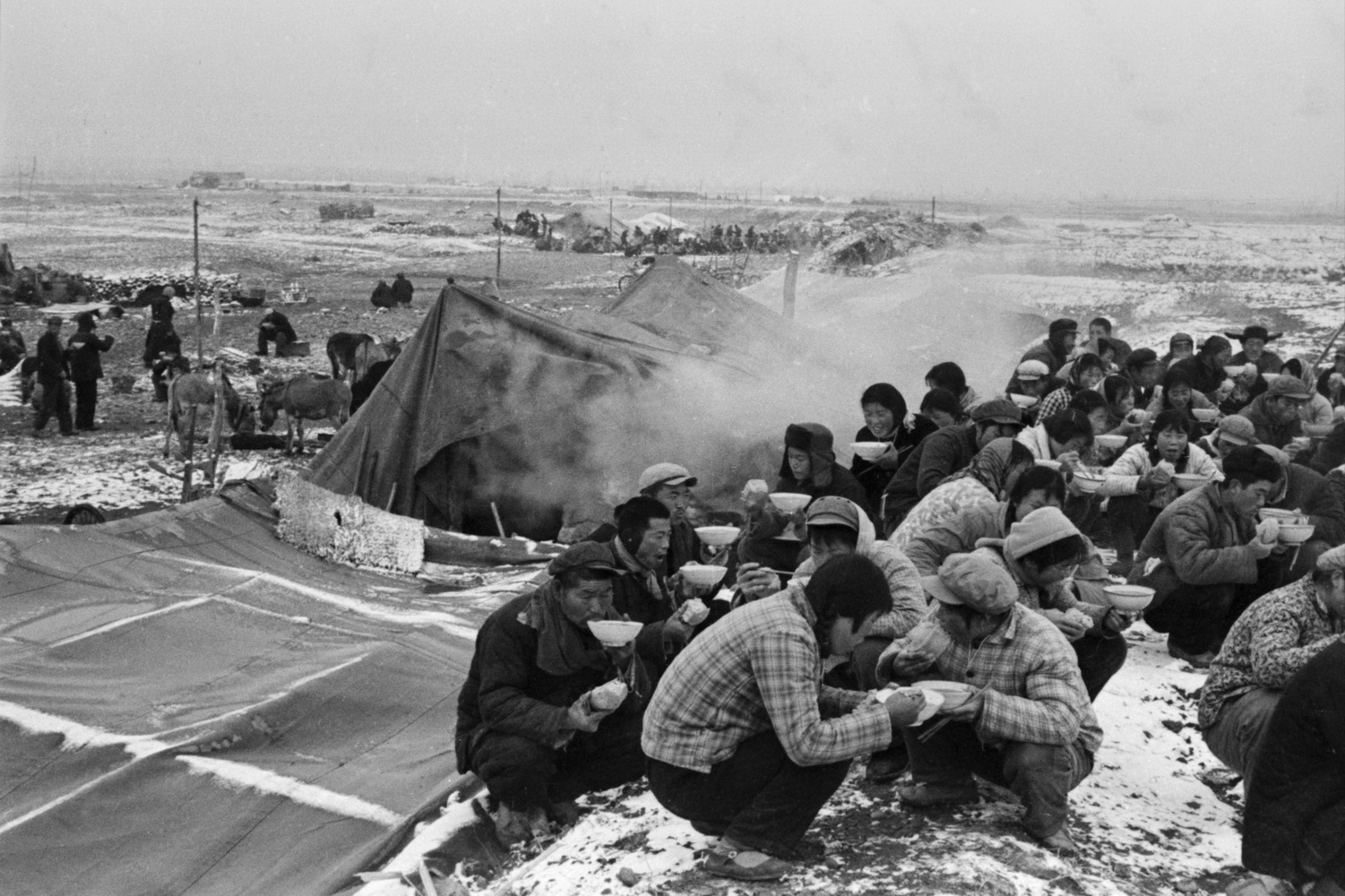
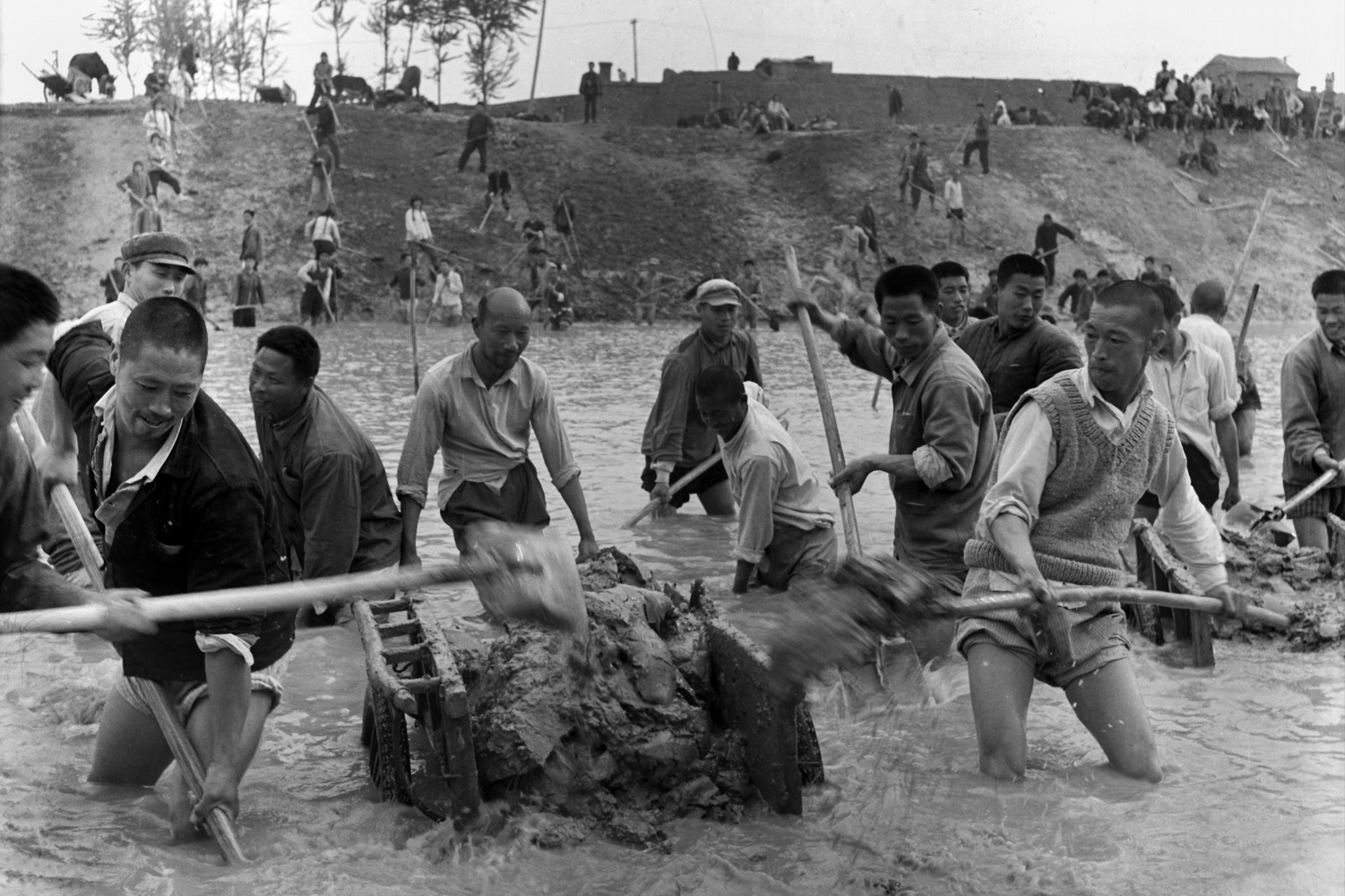
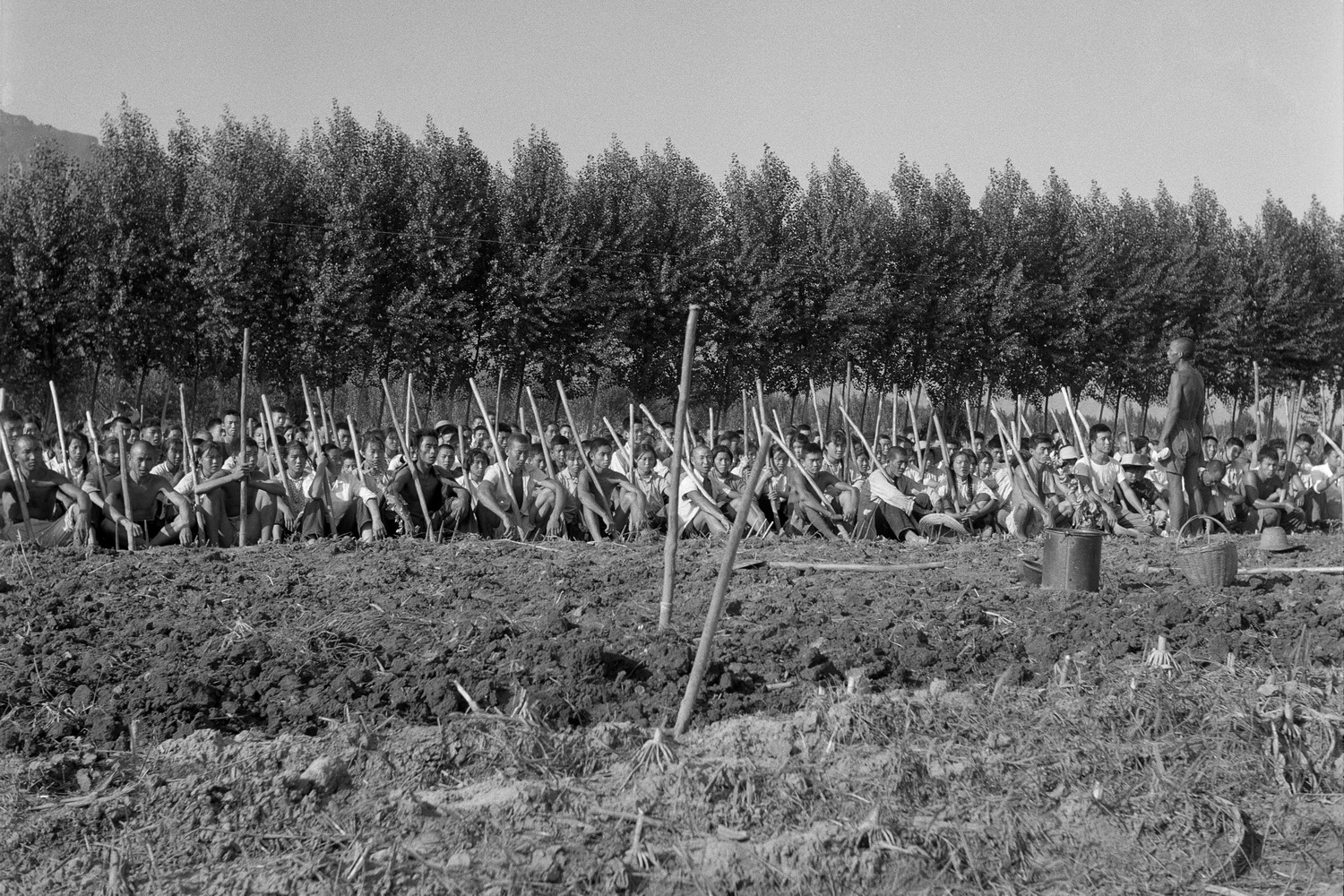
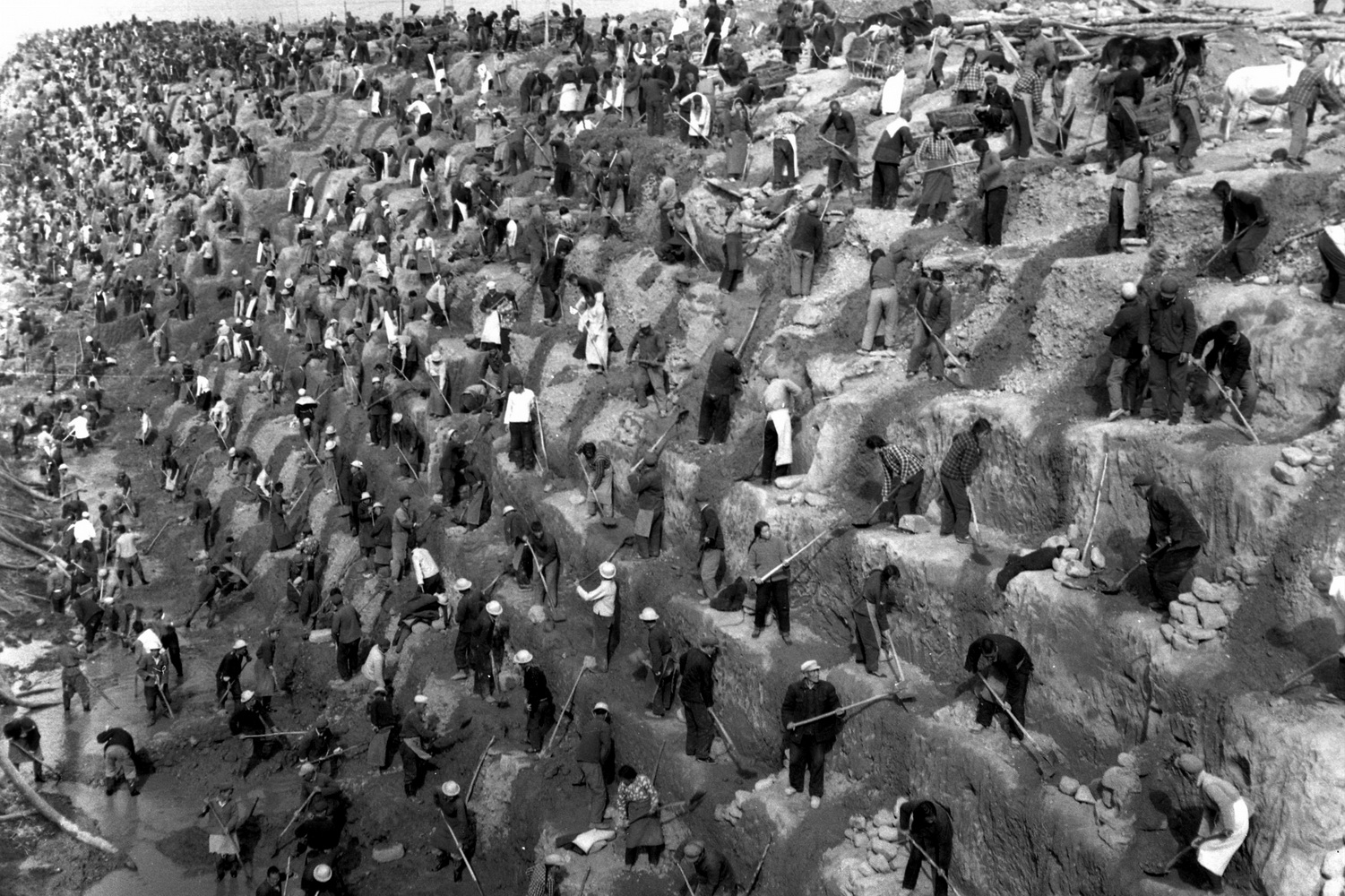
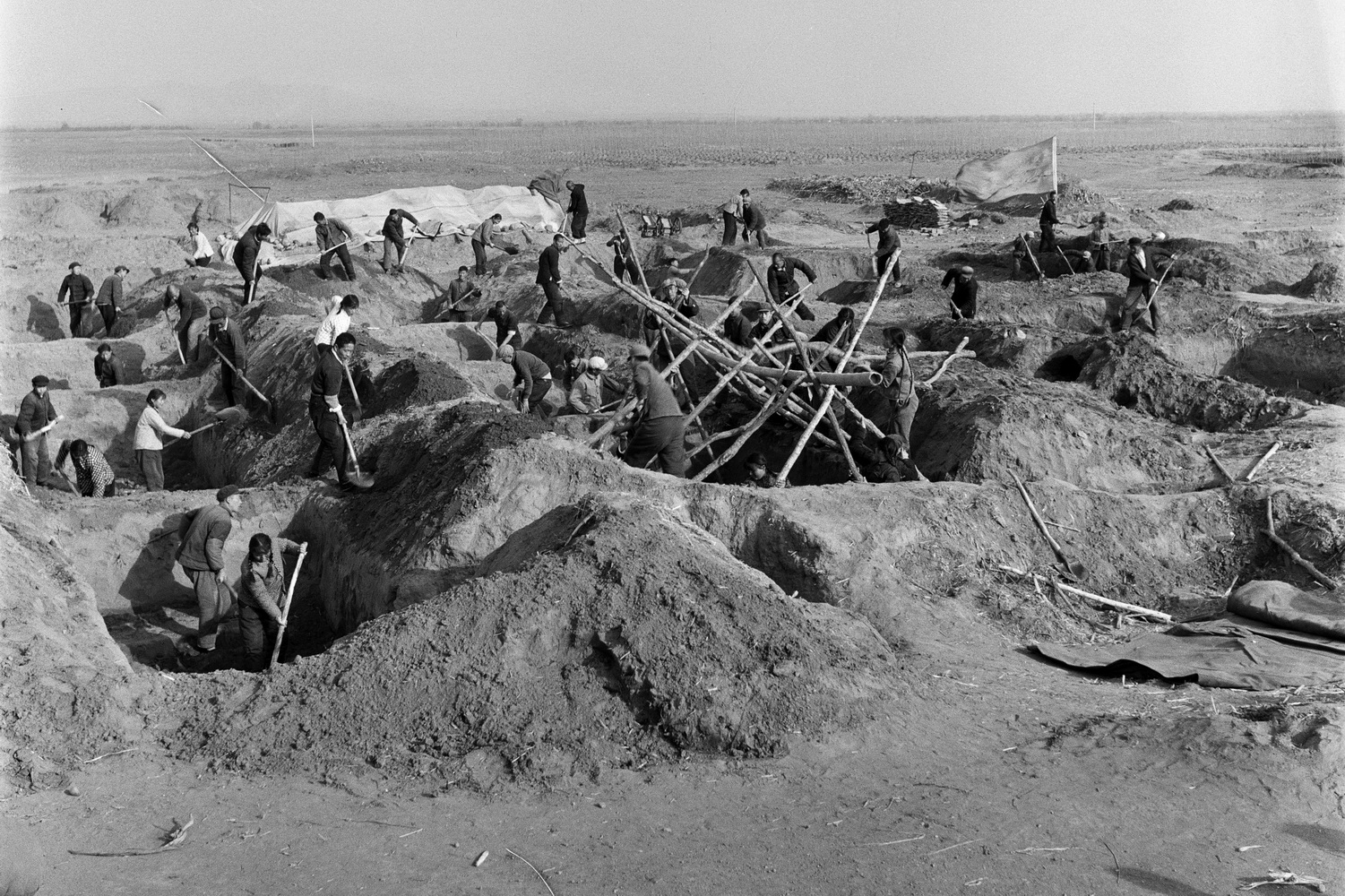
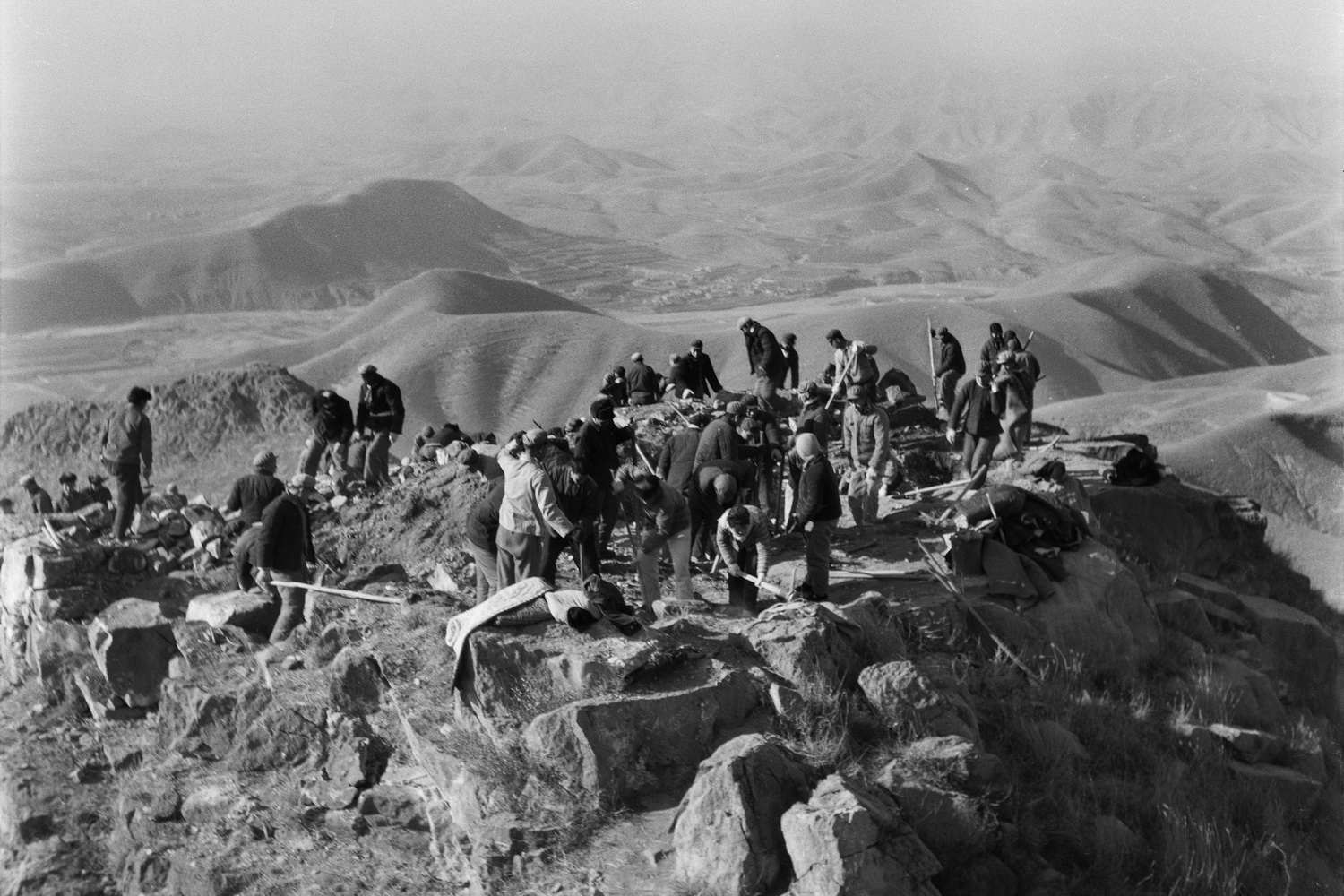
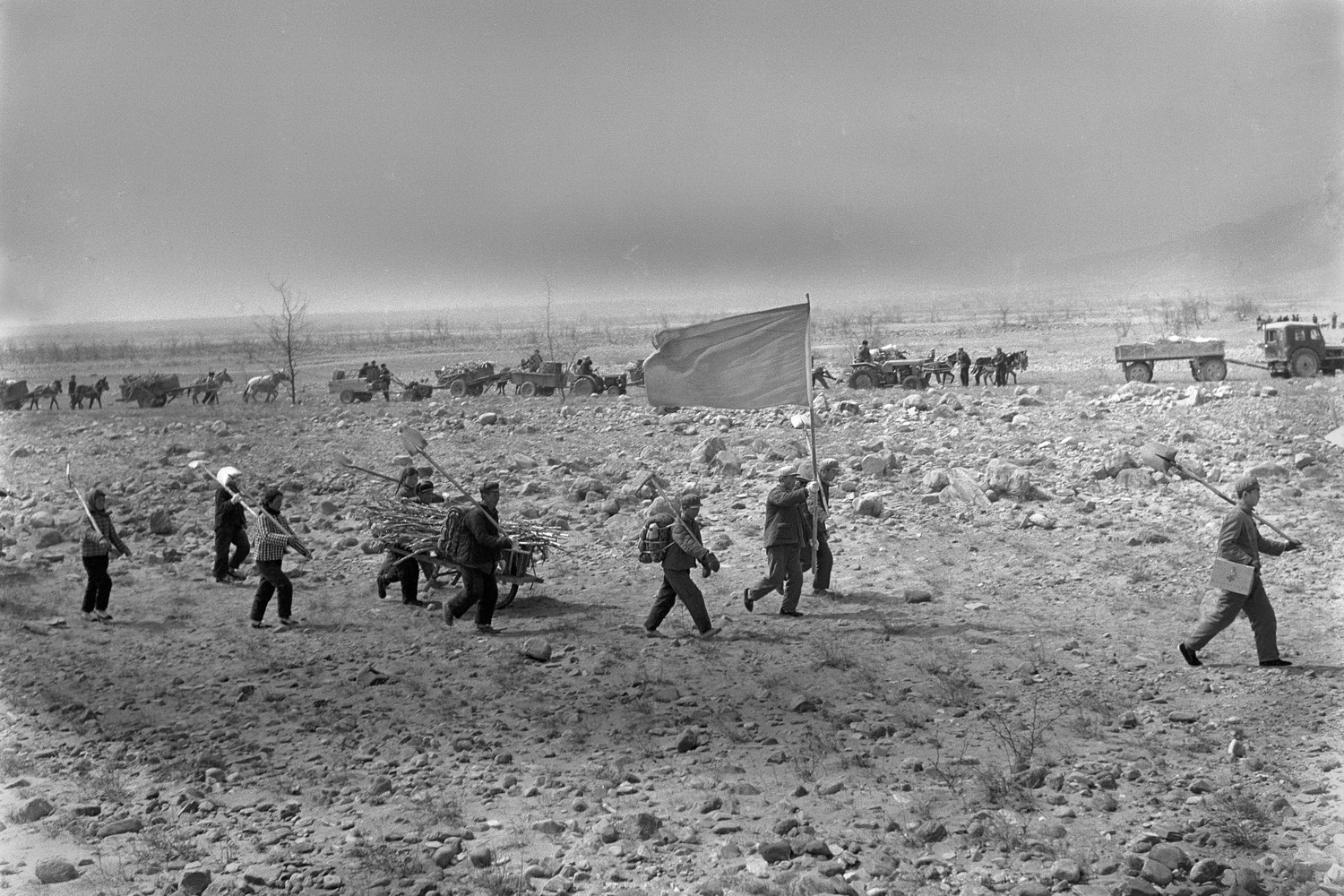
周振华访谈(节选)
李媚
李:您是什么时候,因为什么原因搞摄影的?
周:68年,辉县大干,上边让搞展览,第一个展览是河南省农林科技展览,展览辉县的水利建设。我去以前文化馆没有搞摄影的。文化馆只有一个破“四旧”时查收的旧捷克相机(双镜头),当时不会用,照出的片子反差太弱,我就买了好多资料,学习怎样选景,怎样拍照,光圈快门怎样掌握,以及冲洗配方等等。我现在还放了一些配方。当时学着冲照片,温度不好掌握,自己摸索,夏天用电扇吹药水,冬天用热水调药温。69年6月县上办“三通”展览(路通、水通、电通)领导要求用照片版面宣传。当时照相政治形式要求很严,场面必须有毛主席像和语录牌,照农业得有农业语录,照水利得有水利方面的语录等等。我们就带着一班人,拿着毛主席像、语录牌,书写好的横额和照相所用的大灯泡准备着。当初照不好,也不好用,常出废品,后来新华社记者陆柯、河南出版社王世龙等许多新闻单位来辉县采访,我就跟他们学习。细心摸索,赶制出“三通”展览,共制作54块版面,200多张照片,20多幅毛主席像,20条语录。在县上及水利工地展出后又到各公社巡回展出。
李:版面多大的?
周:一个三合板(1米×2米),54个拉一大车。那个时候上面来记者摄影家来了大多是我陪同的。如王世龙,新华社陆柯、郑震孙、肖顺权、翁乃强、魏德忠等搞展览我到郑州北京找他们,用他们的片,我现在还保存着。后来王世龙帮忙买了个相机。王世龙讲了以个故事,河南省有个县文化馆去上海买海鸥相机,他们那个县产大枣,他去时背了一包枣到上海后因没有指标不卖给他,他怪下气的(沮丧),肚子也饿了拿着红枣在商店里吃起来,后来工作人员问您吃的是啥?枣,我们那里出枣,上海人对枣的营养感兴趣,问他您是来干啥的?他说我是来买照相机的,那人说这个人跑这么远不容易给一台吧,买相机后那人说我回去了,枣也给你们留下了。
一次在水电部办展览时,展览办公室有个姓焦的同志,她有个禄莱相机还不错,省水利厅帮助辉县搞展览的同志介绍说您拿1000块钱买了吧,当时1000块钱是个大数,一个月才45块钱工资,一年都挣不了这么多。让县上买,书记都不敢当家,后来开个常委会时才通过,让财政局批了1000块钱买的,二手的禄莱相机当时是最好的。
李:搞摄影之前您拍过照片吗?
周:没有。
李:有过别人给你拍纪念照的这种经历吗?在这之前您肯定有过照片吧,那些照片都是在哪照的?
周:在照相馆。包括毕业照片,到机关后同志的迎送合影都是在照相馆照的,包括政府、县上的代表会都是照相馆派人去照的,当时县机关没有搞摄影的。
李:从来都没有摸过照相机吗?那个时候对新闻摄影有概念吗?您觉得摄影在您心目中是什么样的工作呢?
周:没有摸过。当时拍回信建设成就的照片,一是被展览逼的,二是做个记录。感觉这项工作很荣幸、很高尚,在领导心中觉得您是重要的人物,到外出差还有出差补助。
李:当时那个出差补助很重要,因为当时大家收入不高。
周:补钱、补粮票。
李:第一次去北京是什么时候?
周:68年。北京电视台姬同志来辉县拍山区建设影片,县革委让我们去借人家的片子,来县上放映。我和两位领导一起去了北京借16毫米黑白影片,通过录音机和影片配音下乡放映。
李:您第一次去北京激动吗?“文化大革命”期间您有没有去串联?
周:激动。没串联过。
李:坐火车去的北京吗?
周:坐火车,当时去北京需要政府开个介绍信,在北京经常在水利部展览办公室住,然后去东郊农展馆布展。
李:当时应该有很多人羡慕您吧?
周:对,县上领导也觉得很重要,展览上的事专门给书记、副书记汇报,外边来的记者多由我接待。
李:翁乃强来辉县多吗?
周:一两次吧,当时他的机器和设备是最好的,像莱卡,当时他在外文局,彩色胶卷和进口胶卷都不好买,而他容易买到,其他记者来额时候给他们分点彩色胶卷。黑白胶卷多。他在辉县拍的彩色片比较多。还给我留了些135片,我现在还保存着呢。
李:他给您的胶卷都是什么牌子的?
周:柯达胶卷。县上买不到,只能买上海、天津的胶卷。
李:您用翁乃强给您的进口胶卷拍的东西还记得吗?
周:当时没有135胶卷的相机。他还把选过剩下的底片留给我。
李:您现在还有保存吗?
周:还有些。他参与出版的《人民中国》里面就有“辉县大干”的照片。
李:我看你的照片,绝大多数都是些水利之类的照片,政治运动的很少,比如游行、批斗会之类的。
周:我主要是在宣传建设成就之类的,大批斗之类的没有拍。
李:那个时候您是不是还没有搞摄影,您摄影时大批斗最厉害的时候已经过了。
周:对,我68年开始摄影,66、67年的时候批斗得最厉害。那个时候斗辉县的县委书记、新乡的地委书记,百泉农校有个人拍过照片。
李:您主要还是记录辉县的战天斗地改变生存环境的现实。
周:对。主要是生产类的,当时要求拍的照片必须有政治形式,有毛主席语录、有标语、有红旗。
李:您参加办过哪些展览?
周:当时办展览,主要是中央、省举办的《全国水利展览》《农业学大寨展览》还有出国展览到埃塞俄比亚、马达加斯加等第三世界国家,广交会当时也是以图片为主。
李:广交会您去了吗?
周:没有,我在北京。一个美工去了,材料都是北京供应,画册在上海印刷的,我主要在北京共同设计好小样。省水利厅李德武同志专门帮助我们办展览。
李:在北京的时候,您在北京水利部的哪个地方工作?
周:水利部展览办公室。因为辉县的水利建设突出,林县、辉县都在展览办公室筹备,在东郊农展馆布展。
李:你们做的展览审查照片严格吗?
周:很严格。画面,说明词,前言都得审查。主要是画面。
李:照片放多大?
周:1米,2米。
李:照片都是你们制作?
走:是。
李:您做暗房吗?
周:做,到后来就交给王树洲做暗房。除了展览还会拍一些新闻照片。
李:那时候的文化馆摄影是不是也有点宣传部新闻科那个意思?
周:宣传部当时没有专职摄影人员,这些任务就落到文化馆了。
李:除此之外,那时文化馆还是有创作任务的,比如省里办什么影展、全国影展之类的?
周:对,这些活动主要是八十年代才逐步有一套系统业务。
李:省里面来的摄影记者多吗?王世龙好像是经常来的。
周:王世龙在出版社,他没有新闻报道硬性任务,他主要来辉县搞创作。从拍辉县新貌等,开始我陪他,后来树洲陪他,在下面找个地吃住,没有车坐拖拉机,我和他除了拍农田水利建设外还到土梯拍日出,在王莽岭拍风光。
李:您学摄影期间,他们有没有给您一些具体的帮助,比如说一起讨论照片?
周:他们在摄影上给我的指导和帮助不是学习班式的,而是具体拍摄过程的指导,如怎么选景、顺光、侧光、逆光怎样用。曝光时间、照片的议论等等都在工作过程中研究商量,不是讲学式的。他还帮助我购买照相器材。
李:他们是先安排好再拍,还是抓拍?
周:抓拍有,但较少。那个时候,处于政治需要就得摆拍,在西关拍全家学“毛选”,除现场布置相应气氛外,全家老少要围在一起学。拍生产队学“毛选”,要排成半圆形,还要有人在中间领着。
李:您一直用的是120相机吗?
周:后来通过王世龙买了一个8片蔡司相机。
李:他们给您的照片直接用于你们的展览吗?
周:按展览要求选择。现在我还放着王世龙、陆柯、新华社等样片。需要展览时就去借底放大。
李:我看您的照片都是黑白的,有彩色的吗?
周:有。80年代后期,我就很少拍照了。85年当文化馆馆长,没有时间,单位的事情太多,我把所有的事都揽了下来,让下边的搞摄影的同志专心搞摄影。县委、县政府、机关事也多。今天要搞计划生育工作,明天又要下乡,顾不了摄影。
李:当时在拍这些修水利、农业照片的时候有没有什么故事。比如哪次拍摄比较不容易?当时生活条件很艰苦,那个时候您是住在工地吗?
周:住在工地。如果要拍一个大的场面,想摆一下,那就必须让工程指挥部领导出面安排,作些调度,搞统一行动,不然自己拍不成。
李:我看照片上有一些工棚,大家都住在一起。
周:辉县的每个工地都有指挥部,县、社、队指挥部都有食宿一套安排,上边领导下来也住指挥部,管吃管住,另外还拍一个向导陪同。修石门水库时,王世龙、新华社等新闻单位的记者来了也都住那里。
········
李:上面来的人安排拍摄场面都是有由您去安排吗?
周:我们按需要共同商量,我也可以独立完成拍摄安排,但都要事先和工程指挥部取得联系。
李:您自己拍的时候也会照着他们的样式去智慧、布置一个宏大的场面吗?
周:对,我们是按他们的路数,根据自己的需要去安排。
李:您的拍摄完全是为了辉县的展览服务的,
周:主要是。同时也想记录些劳动场面。报纸上发表照片多是文字记者带去的,很少主动送过照片。县委把来辉县的摄影、文字记者,书画家、作家等都集中在一块住,把一中改成了接待站,吃住都在那,大家接触方便。
李:啊,整个一中全部用来接待采访人员。那个时候的辉县真热闹啊!外边来的人除了记者还有别的身份的人吗?
周:摄影的最熟,其他都在一块住还比较熟,中央美院的古一舟画家还赠我一幅国画,至今还保存着。
李:辉县大干的时候,除了新闻机构以外,还有搞艺术创作的?
周:有画家,古一舟、马泉等。有写小说的李准,有拍电影的庄伟,诗人郭小川,还有一部分是下来体验生活的蒋南翔、穆青。
李:蒋南翔在劳动那张照片是您拍的吗?
周:是。
李:您给我的将照片中有蒋南翔吗?
周:有,另外还有副总理陈永贵、孙健等。
李:您接触了很多名人呀,当时除了拍些水利之类,您还拍过很多到辉县来的名人。
周:如水利部长钱正英、新华社社长吴冷西等。
周:除了坚持工作以外,我把保存下来的上万张照片整理以后有2500多张归类印样,每张片写清时间、地点作为当时的记录。
·······
李:你去北京办展览的时候不是在北京住过很长时间吗?您和北京那些记者比如翁乃强、新华社的记者们除了工作之外还有其他的接触吗?比如一起到哪玩玩什么的?
周:我去找他们,主要想交流借用有关辉县资料的照片。
李:没有私人交流?
周:没有。主要是工作上的接触。
李:您除了学习摄影以外有没有和什么人建立很好的私人关系吗?
周:新华社的陆柯、王世龙来辉县较多,住的时间也长,关系比较密切。王世龙来了到我家吃饭,我去郑州也去他家,接触比较多。
李:您有没有经常看看王世龙的照片,你们之间讨论不讨论摄影的事情呢?
周:我经常看王、陆拍的照片,有关辉县照片洗了两本小样我还放着,用时找他们要底片,用完了再还给他们。
李:看来相互之间是很信任的。那我能看一下,王世龙、翁乃强等的照片吗?
周:行。
周老随即带我到一间在小院搭出来的可能不到十平米,且光线很暗的偏房。房子里全是周老一生的积累:房子的中央摞放着非常整齐的一本本的照片夹,里面全是整理过的底片、小样,每张照片都有拍摄地点和时间。发表过周老照片的出版物,工作笔记、资料等都井井有条。仅凭这些资料,就能断定周老工作和一生为人的认真仔细。采访进行了一上午,下午周老又仔细地把所有照片的拍摄时的背景给我们讲了一遍·······
周老的讲述使图录的说明区别于一般的图片说明,为照片提供了更为丰富与细节资料。
评论节选
周振华先生的摄影经历与大多数中国基层的摄影人一样,他们的摄影充分呈现了革命年代的话语方式。同时,在他们的经历中所呈现出的摄影人的热情、单纯、朴素,对于摄影如信仰般的虔诚以及摄影人相互之间真诚的友情,都是一个时代的印迹,是个体生命难得的财富。
Marks of The Days
Interview with Zhou Zhenhua (extracts)
By Li Mei
L: When, and why did you start to be a photographer?
C: It was in 1968, during the construction period of Hui County, there was a superior’s order to host a local exhibition. The first one was an exhibit of Henan Province Agriculture and Forestry Constructions, which was intended to show the water conservancy construction of Hui County in Henan. At that time, there’s only an old Czech camera (with double lens) that was confiscated during the Elimination of Four Stereotypes Movement. Of course, I had no idea how to use it, and contrast in the films was too weak. So I did a lot of research, read many study materials, and learnt how to choose view, how to shoot, and how to control the aperture, shutter, and the rinse formula. I still use some formula till now. It was hard to control the temperature when rinsing the photos at the beginning, and I was self-taught. Electric fan was used to cool down the potion in summer, while the hot water was used to heat in winter. In June 1969, there was an exhibition about “ Three Routes” (road, water, electricity), which required by the government to use some photos layout for the policy. At the time, it was so strict that public spaces have to have something about chairman Mao such as photos and signage. We took his portrait and words written on the street board lighten by big bulbs. At the beginning, we failed on every part of the installation. Later, journalists Lu Ke from a Xinhua news agency and Wang Shilong from a Henan Press came to make interviews; in that case, I could only learn something from them. After a period of learning and practicing, we eventually made totaling 54 pages layouts, more than 200 photographs, over 20 chairman Mao portraits, and 20 quotations signs. Successfully, the exhibition was able to travel around the county and from different water conservancy construction sites to communes.
L: What size were the layouts?
C: 54 three-ply boards in one truck with 1m*2m each. At that time I usually accompanied the photographers who came to Zhengzhou, such as Wang Shilong, Lu Ke, Zheng Zhensun, Xiao Shunquan, Weng Naiqiang, Wei Dezhong and so on. So I could go to Beijing to find their films, which I have still saved till now. Later, Wang helped me to buy a camera and told me one story. In Henan, a director of a cultural center in a county that abounds in big jujube went to Shanghai to buy the Shanghai Seagulls camera, and was rejected by the store for some reasons. Then, with depression he started eating jujube that he carries at the store. A staff felt interested in his jujube and then came to ask his situation, and decided to help. Eventually, he brought the camera and left the jujube for the sale help.
There’s one time, on an exhibition hosted by MWREP (Ministry of Water Resources and Electrical Power), a lady called Jiao Laiyang had a nice Rollei camera, a guy from the Water Resources Department introduced me to her and suggested me buy her camera for 1000 Chinese dollars. At that time, 1000 RMB was an extremely huge amount of money that far beyond a person’s yearly salary, when everybody’s compensation was only 45 RMB per month. The county party secretary was not able to make the decision, so after a serious committee meeting, the Finance Bureau finally got approved to buy camera at that time, and it was a best camera at the time.
L: Have you ever taken any photos before you became a photographer?
C: Never.
L: What about experiences that others take souvenir pictures for you? You’ve got some photos at home before, right? Where did you take them?
C: At commercial photo studios. Including group photos of graduation, welcoming and farewell photos with coworkers, all the pictures were shot in the public studios. When there were standing committee meetings, studios would send photographers. There weren’t any photographer positions in the government office.
L: Have you ever touched the cameras before? Did you have any concept about photography at that time? What kind of job do you consider as a photographer?
C: Never. Those photos were whether forced by the exhibitions or just to record. I felt this job was like very glorious, honorable, and me myself was very important in the leader’s mind, for I could get the subsidy for the business travel.
L: Subsidy was very significant at that time while people couldn’t get high salaries.
C: The subsidy included both money and food coupon.
L: When was the first time you went to Beijing?
C; It was in 1968,Mr. Ji from BTV came to Hui County to direct a movie represent the mountainous area construction. The County Revolutionary Committee let me to borrow their work to show in the county. I, and two leaders with me, went to Beijing to get that 16mm black and white film, and replayed it by using a recorder and dubbing.
L: Was the first time there excited? Have you ever joined the Great Linking Up during the Cultural Revolution?
C: Excited, but didn’t joined.
L: Got there by train?
C: Yes. A recommendation was needed. And I often lived in the Water Resources Department Office, and then went to the Agriculture Exhibition Center to exhibit.
L: You must be envied?
C: That’s right. Leaders from the county also took that seriously, and anything about exhibitions must be reported to the secretary and vice secretary. And I was in charge of the reception for the journalists came around.
L: Did Weng Naiqiang come often?
C: Once or twice maybe. He had the best camera, could be like Leica. He was in the Foreign Office at that time, color films and imported films were hard to buy, but he could easily get them, and distributed them to other journalists. I still have some 135 films he gave me.
L: Which brand?
C: Kodak, which nowhere one could find except Shanghai and Tianjin.
L: Can you remember what you had taken with that film he gave you?
C: There were no 135 film cameras, he had given me some rest of the films after he chose.
L: Keep them still?
C: Still have some. There are some pictures about the Great Construct in Hui County in the book of People’s China which he participated the publication.
L: Most of your photos are about water resource construction, seldom are about the political movements, like the parades, and ganging up.
C: I was mostly responsible for the construction propaganda. I never take other things.
L: Didn’t you start to be photographed until the most serious period had passed?
C: Right. The most horrible years were 1966 and 1967, while I started to take photos at 1968.
L: You mainly recorded the reality of people fighting against the nature in Hui County.
C: Absolutely. Just about the constructions.
L: What exhibitions had you joined?
C: Mainly the exhibitions held by the Party Center and Province Government, like National Water Resources Exhibition, Learning Agriculture from Dazhai Exhibition. And some abroad exhibitions in the Third World like in Ethiopia and Madagascar. And may also participate in the Canton Fair.
L: Did you go to the Canton Fair?
C: I didn’t, since I was in Beijing. An art worker did. Materials were applied by Beijing, picture albums were printed in Shanghai, I just designed in Beijing. Mr. Li DEwu from province WRD helped us.
L: When in Beijing, which section did you work for in the WRD?
C: WRD exhibition office. Cause the achievements of construction in Hui County was outstanding, people from Lin and Hui counties just prepared in the office and went to the Agriculture Exhibition Center to exhibit.
L: Was the examination about the photos in the exhibition strict?
C: Very. The images, instructions, and introductions all needed to be examined, especially the images.
L: How large were the amplifications?
C: 1m, 2m.
L: All the pictures made by you?
C: Yes.
L: Did you rinse in the darkroom?
C: I did, and then I delegated that to Wang Shuzhou. I would also take some news photo.
L: Was taking photos in the cultural center at that time, kind of like in the News Office of Propaganda Department?
C: Kind of. These activities just got their systems, step by step until 1980s.
L: Were there many photojournalists from the provincial government? Wang seemed to come very often.
C: He was in the press, and didn’t have to report the news. He just came to the county to create his works, like the new appearance of Hui County. I stayed with him, then Shuzhou. We found a place to live in downtown, we traveled by tractors cause there were no cars. Except the farming and water resource construction photo taking, we also got onto the earth's ladder to shoot sun rising, and took landscape photos at Wangmangling Mountain.
L: Did they ever give you some specific help during you were learning to take photos? Like discuss about the photos together?
C: Their help and guidance wasn’t like that in a classroom, it was very specific just during the process. Like how to compost, the concept of photometry, and how to use the backlight. Discussions on the photos and exposure just happened during when we worked. It was just not that theoretical, and they also helped me to buy equipment.
L: Did they take photos by arrangements or just capture?
C: There would be some capturing, but seldom. Picture posing was political. When we took pictures of a whole family learning Mao’s Anthology in Xiguan, we had to lay out the atmosphere that the whole family members were learning together. While when we took the pictures about learning the anthology in a production team, the people should be arranged into a half circle, with a man leading them in the center.
L: You used 120 camera all the time?
C: I got one Zeiss camera with 8 lenses through Wang Shilong later.
L: Were the photos they gave to you directly used on the exhibition?
C: Would be chosen as the requirements of the exhibitions. I still have the print from Wang Shilong, Lu Ke, and Xinhua News Agency, and will enlarge them if there were any needs.
L: I saw your photos are all black and white, are there any color ones?
C: Yes. In the late 1980s, I seldomly took photos. After I became the director of the cultural center, I couldn’t have time to do it. Too many things to do at the center, I took them all, and made sure that photographers could focus on taking photos. And also, many things were from County Committee and County Government, like works of birth control, and going to the countryside. So I just couldn’t afford to take photos.
L: Tell us some stories when you took photos of water resources and agriculture constructions. Which part is the most difficult? The living condition was very poor at that time, have you lived on the construction site?
C: Of course, I did. If I wanted to get some big vision, I had to invite the leaders from the headquarters to make some arrangements and dispatches. Otherwise, I couldn’t make it myself.
L: I saw some work sheds that could accommodate you all together.
C: There were headquartered in each construction site. And every headquarter got accommodations for everybody. Even government leaders also came to live there. And leaders would also be arranged to have guys accompany with. When repairing the Stone Gate Reservoir, Wang Shilong and other journalists from Xinhua News Agency also lived there.
… … …
L: Were you in charge of arranging everything when superiors required photography?
C: We need to discuss together. Actually I could do it by myself, but everything should be informed to the construction headquarters beforehand.
L: Would you arrange a grand spectacle like the way they did when you take photos?
C: I would follow their approaches, and arrange it based on what I need.
L: Your photos were definitely serving for the exhibitions of Hui County.
C: Mainly were. Moreover, I intended to record some laboring scenes. The journalists mostly brought photos published on the newspapers, and few are from the photographers. Painters, writers, and all the people accommodated at one place, they transferred the No.1 Middle School a reception stop, it was really convenient to stay in touch with others.
L: That sounds so lively! Were there people from outside with other identities except journalist?
C: I’m most familiar with photographers. Artist from CAFA, Gu Yizhou, once gave me a painting and I still have it.
L: Were any painters there during the construction period of Hui county?
C: Artists like Gu, and Ma Quan etc. Novel writer, Li Zhun, director , Zhuang Wei, poet Guo Xiaochuan, and some came just to experience, like Jiang Nanxiang and Mu Qing.
L: Did you take the photo of Jiang Nanxiang is at work?
C: Yes.
L: Are there any photos about Jiang inside that you gave to me?
C: Yes. And some are photos taken by Prime Minister Chen Yonggui and Sun Jian etc.
L: Seems like you are in touched with a lot of celebrities.
C: Such as Minister of WRD, Qian Zhengying, and President of Xinhua News Agency Wu Lengxi etc. In addition to keep working, I maintained dozens of thousands of photos, and reorganized them into 2500 classification print by attaching time and place on them.
… … …
L: Did you live in Beijing for a while when you have exhibitions there? Did have keep in touch with the journalists like Weng Naiqiang besides work purpose? Like did you hang out with them?
C: I mostly went to them for communicating on borrowing photos about the Hui County.
L: No more personal communications?
C: None. Just for business.
L: Have you built any good personal relationships with people based on photography?
C: Lu Ke and Wang Shilong from Xinhua News Agency came for many times to Hui County, and they also lived there for a long time, so we got very close. Wang came to my home for dinner, I also went to his home in Zhengzhou city. We keep in touch very often.
L: Have you often seen Wang Shilong’s photos? Do you discuss photography with him?
C: I often see their photos, and I still have the hand samples about Hui County. Found the guys whenever I the photos, and return them after.
L: Seems all of you trust each other. So can I see some photographs of Wang Shilong and Weng Naiqiang?
C: OK.
Later, Mr. Chou took us into a wing-room, which built in a yard with probably less than 10 square meters. With the dim light, the room was full of collections by Mr. Chou for his entire life: in the middle, there were numbers of old photo albums that neatly compiled on the desk. Inside the albums, there were all these films and samples; every one of them was clearly marked with the date and place. Publications of his photos, working notes and documents were all arranged in good order. You could easily find that he’s a serious and careful guy. The interview lasted the entire morning. In the afternoon, again, he explained us every single story and memory behind each photo…
His narrative of the photographs is different from the instruction of a catalog; it provided us more abundant and detailed information towards his photography.
Similar to photographing experience of the majority of Chinese grassroots photographers, Mr. Chou Zhenhua’s works fully show a mode of discourse of the revolutionary age to the audience. Meanwhile, it’s all about stamps of that age, and individuals’ rare treasures when we look at the photographers’ inner passion, purity, simplicity, pious belief in their careers, and sincere friendships between photographers, which are with a stamp of an era, and are treasures for all those individuals and their life.
——Li Mei,postscript of the Old Foolish Man Who Removed Mountains: the Grand Vision of An Age


 豫公网安备 41019602002106号
豫公网安备 41019602002106号